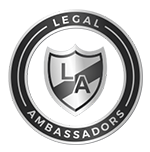New York DWI Offenses: Differentiating Misdemeanors and Felonies and Their Consequences

A DWI is typically a misdemeanor charge in New York. A conviction for a first offense results in a jail sentence of up to one year, a maximum $1,000 fine, and driver’s license revocation for up to six months.
However, a first-time DWI can be charged as a felony, depending on the circumstances of the case. Common factors criminal court judges consider include the defendant’s blood alcohol content (BAC), criminal history, and if other parties were harmed as a result of the arrest.
Here are several ways a DWI offense can become a felony in New York:
- BAC of .18 percent or higher – The legal limit in the state is a BAC of .08 percent. When a person’s BAC is at least .18 percent, which is more than double the legal limit, it is considered an aggravated DWI. This type of DWI is considered a Class E felony, punishable by a maximum four-year prison term.
- Multiple DWIs – The courts believe any person who has been convicted of a DWI offense should learn his/her lesson and avoid drunk driving for the rest of their life, which is why a second DWI charge is a Class E felony. A third offense within the past 10 years of a previous DWI conviction is a Class D felony that carries a maximum seven-year prison sentence.
- DWI involving injury or death – If a DWI arrest involves another person suffering a serious injury, it is considered second-degree vehicular assault, which is a Class E felony. However, if the driver’s BAC is at least .18 percent, he/she will be charged with first-degree vehicular assault, which is a Class D felony. If a DWI arrest involves the death of another person, it is considered second-degree vehicular manslaughter, which is a Class D felony. Yet, if the driver’s BAC is at least .18 percent, he/she will be charged with first-degree vehicular manslaughter, which is a Class C felony that results in a maximum 15-year prison term.
If you have been charged with a felony DWI in Albany, contact O’Brien & Eggleston PLLC today at 518-391-2369 and request a free case evaluation.
Related Links:





